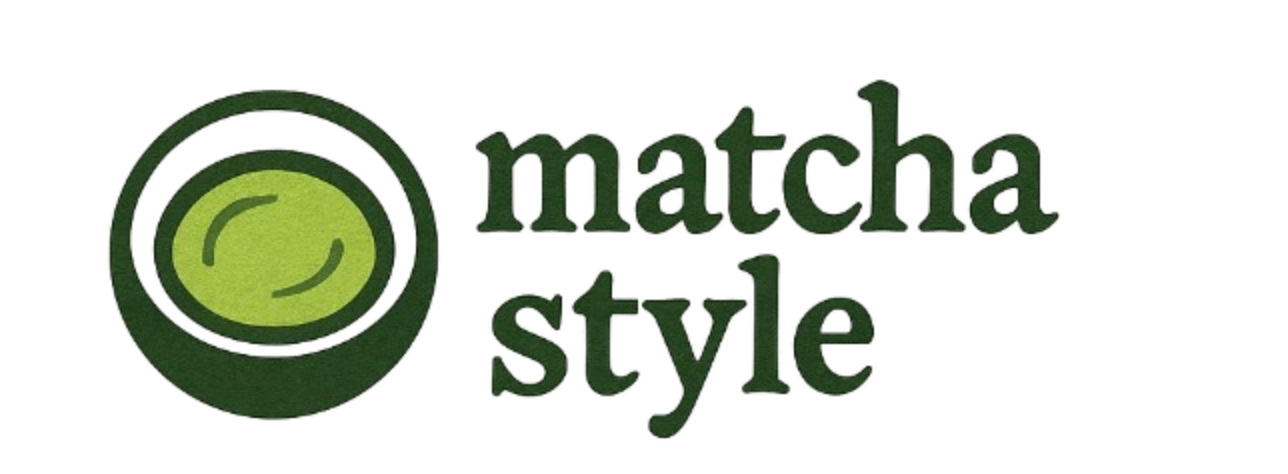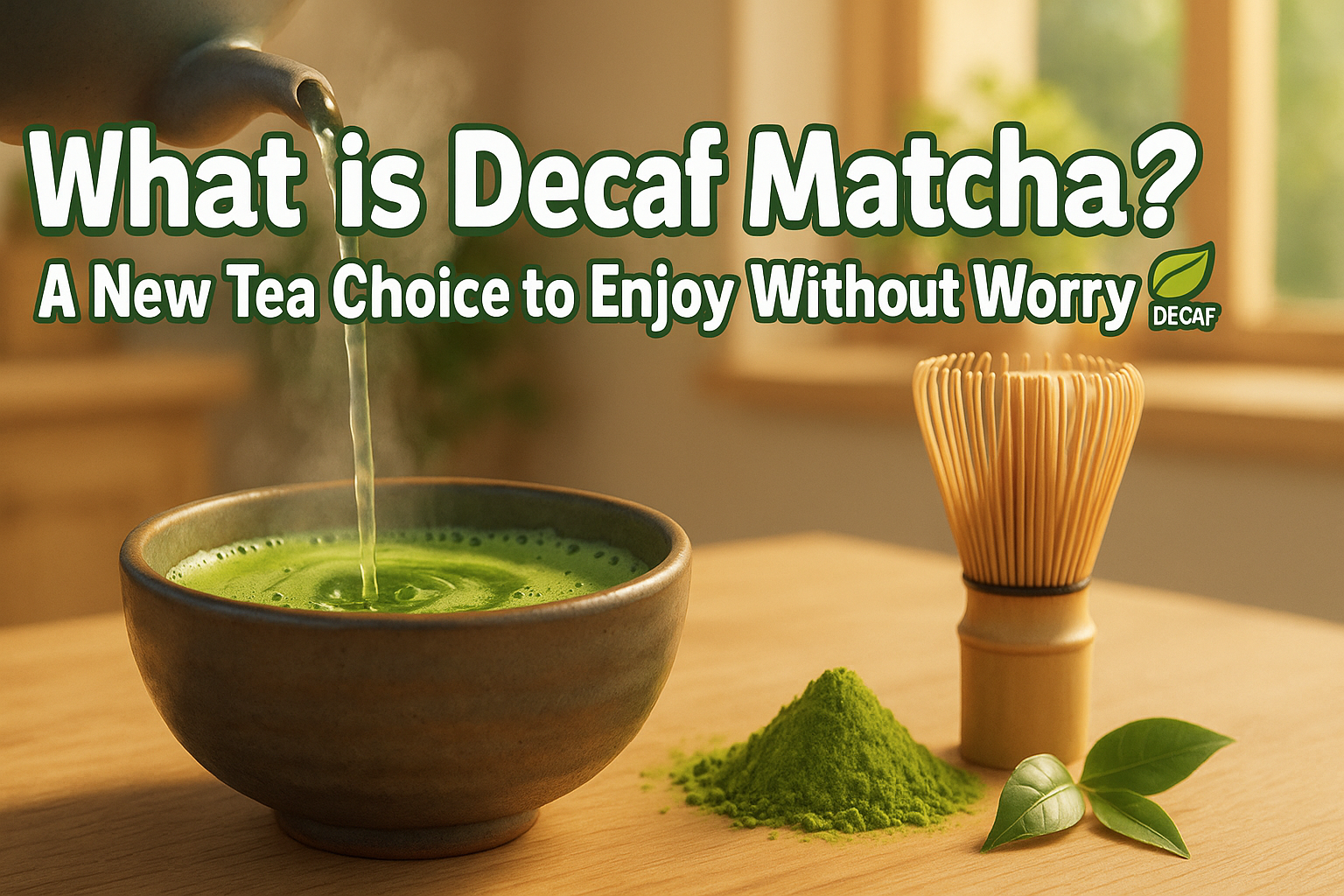- What Is Decaf Matcha?
- How Much Caffeine Is Left?
- What Does Decaf Matcha Taste Like?
- Does It Still Have All the Good Stuff?
- How Is the Caffeine Removed? (And Is It Safe?)
- The Wonderful Benefits of Decaf Matcha
- Who Is Decaf Matcha For?
- How to Make a Delicious Cup at Home
- Fun and Creative Ways to Use Decaf Matcha
- Your Decaf Matcha Questions, Answered
What Is Decaf Matcha?
Decaf matcha is a special green tea powder made for enjoying matcha anytime, day or night. Normally, matcha contains caffeine—the natural stimulant in tea and coffee that gives you an energy boost. But for some, caffeine at night can make it hard to sleep. That’s why decaf matcha was created! It lets you enjoy the rich flavor and deep aroma of matcha without the worry. The beautiful green color and mellow taste are all there, making it a perfect choice for expecting mothers, children, or anyone who wants a soothing cup before bed.

How Much Caffeine Is Left?
Decaf matcha isn’t 100% caffeine-free, but it’s close! The process removes over 90% of the caffeine compared to regular matcha. For example, a typical serving of regular matcha has about 60 milligrams of caffeine. In decaf matcha, that amount drops to just a few milligrams—about the same as a cup of decaf coffee. With a level this low, its effect on your body is tiny, so even people sensitive to caffeine can enjoy it whenever they like.
What Does Decaf Matcha Taste Like?
The flavor of decaf matcha is very similar to regular matcha, with one subtle, delicious difference. Caffeine is part of what makes matcha slightly bitter. By removing it, the taste becomes milder and smoother. You’ll notice less of a sharp bite and more of the natural umami (a rich, savory taste) and sweetness shining through. If you love the strong, bitter notes of traditional matcha, it might feel a little gentler. However, this softer flavor is fantastic for lattes and sweets, as it blends beautifully with other ingredients.
Does It Still Have All the Good Stuff?
Yes! Keeping matcha’s amazing health benefits is a top priority during decaffeination. Matcha is packed with nutrients like L-theanine (an amino acid that helps you relax) and catechins (powerful antioxidants). The best decaffeination methods are designed to keep these valuable nutrients safe. This means you can still enjoy the calming feeling from L-theanine and the positive health effects of catechins in every cup.
How Is the Caffeine Removed? (And Is It Safe?)
The safest and most common way to make decaf matcha is called “Supercritical Carbon Dioxide Extraction.” It sounds scientific, but it’s actually a very natural process that only uses purified water and carbon dioxide (the same stuff in sparkling water). In this method, CO2 is put under pressure until it enters a special “supercritical” state between a liquid and a gas. This allows it to act like a magnet, pulling only the caffeine out of the tea leaves while leaving the flavor and nutrients behind. Because it uses no chemical solvents, it’s completely safe for you and friendly to the environment.
The Wonderful Benefits of Decaf Matcha
Choosing decaf matcha comes with some fantastic perks. The biggest benefit is simple: you can enjoy matcha whenever you want, without thinking about caffeine. It’s a great option for pregnant or breastfeeding mothers who need to watch their caffeine intake. Plus, a warm cup of decaf matcha before bed can help you drift off to a peaceful sleep, thanks to the relaxing L-theanine. It’s also less likely to wake you up at night. Decaf matcha is also perfect for moments when you want to focus without the caffeine jitters.
Who Is Decaf Matcha For?
Decaf matcha is perfect for anyone cutting back on caffeine, including expecting or nursing moms. It’s also a wonderful way for families to share the joy of matcha with their children. If you love a relaxing evening ritual, it’s a great choice for you, too. When you’re shopping, look for products that mention their decaffeination method. Those using “Supercritical Carbon Dioxide Extraction” usually have the best flavor and nutrients. It’s always a good idea to choose matcha from trusted tea brands that are open about how they make their products.
How to Make a Delicious Cup at Home
Making decaf matcha at home is easy and just like preparing regular matcha. First, warm your tea bowl with a splash of hot water, then pour it out. Use a small sifter to add about one teaspoon of decaf matcha to the bowl—sifting gets rid of clumps and makes it silky smooth. The best water temperature is around 80°C (175°F). You can get this by boiling water and letting it cool for a minute or two. Pour about 70 ml (2.4 oz) of the hot water into the bowl and start whisking! Use a bamboo whisk (chasen) and move it quickly in a “W” or “M” shape until a lovely, fine foam appears on top. Your perfect cup is ready to enjoy.
Fun and Creative Ways to Use Decaf Matcha
Don’t just drink your decaf matcha—get creative in the kitchen! Its mild, smooth flavor is perfect for all kinds of recipes. You can easily whip up a creamy matcha latte by mixing the powder with a little sweetener and warm milk (or a dairy-free alternative). For a simple and elegant Japanese-style dessert, try sprinkling it over vanilla ice cream. You can also mix it into pancake batter or cookie dough for beautiful, fragrant green treats. And since it’s decaf, you can add it to snacks for your kids without a second thought!
Your Decaf Matcha Questions, Answered
Does it have the same health benefits?
Mostly, yes! While the caffeine is gone, nearly all the good stuff like L-theanine and catechins are still there for you to enjoy.
Is the taste weaker?
Not weaker, just different! With less bitterness, the rich umami and natural sweetness become the star of the show, a flavor many people absolutely love.
Where can I buy it?
Decaf matcha is becoming easier to find at specialty tea shops and online stores. Have fun exploring different brands—checking their methods and where their tea comes from is all part of the matcha adventure!



